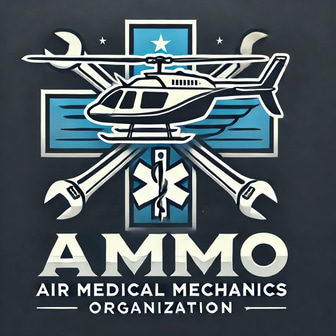Disclaimer: The information provided is for general informational and educational purposes only. Nothing contained herein shall be construed as guidance for, or a basis of, compliance of any regulatory or certification standards. This information must not be used as the sole basis for the certification, inspection, repair, modification, or return to service of any aircraft, product, or component. Users are responsible for consulting appropriate, approved technical data, regulatory authorities, before performing any maintenance, modification, or return-to-service actions.
FAA Maintenance Training Regulations and Guidance
FAA Training Requirements for Aviation Maintenance Personnel
Maintenance Training for Air Carrier Operations
AC 120-115 Ed Update – Provides guidance on training programs for aviation maintenance personnel. It ensures that training meets FAA safety standards and promotes continuous learning for mechanics and technicians.
AC 120-124 – Establishes competency-based training standards for aviation maintenance professionals. It focuses on enhancing technical skills, troubleshooting methods, and compliance with regulatory requirements.
AC 120-51E – Details crew resource management (CRM) training for maintenance personnel. It highlights effective communication, teamwork, and decision-making in maintenance operations.
Training for Repair Stations and Technical Personnel
AC 120-72A Ed Update – Provides guidance on repair station training programs. It ensures that FAA-approved repair facilities meet personnel qualification standards.
AC 120-94 Ed Update – Establishes procedures for advanced maintenance training programs. It emphasizes human factors, risk assessment, and compliance with operational standards.
AC 145-10 CHG 1 Ed Update – Outlines training requirements for FAA-certificated repair stations. It ensures that maintenance personnel receive adequate training on repair techniques and quality control measures.
FAA Training Standards for Mechanics and Technicians
Aviation Maintenance Technician (AMT) Training Programs
AC 147-3C – Provides FAA guidelines for Aviation Maintenance Technician School curriculums. It establishes education standards for individuals pursuing an AMT certification.
AC 61-137B – Covers the requirements for mechanics obtaining an FAA-issued certificate or endorsement. It explains the licensing process and practical test standards.
AC 65-15A – Establishes certification criteria for mechanics, repairmen, and technicians. It ensures that individuals meet the knowledge and skill standards required for aircraft maintenance work.
Continuing Education and Recurrent Training for Mechanics
AC 65-24 CHG 1 – Details training requirements for ongoing maintenance certification renewal. It ensures that mechanics remain proficient in current repair techniques and regulatory changes.
AC 65-2D – Provides guidance for mechanics and repairmen on FAA examination requirements. It ensures applicants meet knowledge and experience standards before certification.
AC 65-30B CHG 1 – Establishes aviation maintenance refresher training guidelines. It helps mechanics stay updated on industry advancements and regulatory changes.
AC 65-31B – Covers continuing education requirements for maintenance personnel. It ensures that AMTs and repairmen maintain competency through periodic training.
AC 65-33A – Establishes FAA-approved maintenance training programs. It focuses on technical skills development and compliance with modern aviation safety standards.
FAA Legal Interpretations on Maintenance Training
AC 91-32B Ed Update 2 – Provides clarification on training requirements for aircraft maintenance under Part 91 operations. It ensures proper qualification and competency standards for maintenance personnel.
Carpenter 2012 Legal Interpretation – Offers FAA legal insight on maintenance training compliance. It clarifies the requirements for on-the-job training, certification, and FAA oversight
© 2024. All rights reserved.
Disclaimer: The information provided by the Air Medical Mechanics Organization (AMMO) is for general informational and educational purposes only. It has not been reviewed, approved, or accepted by the Federal Aviation Administration (FAA), any Organization Designation Authorization (ODA) holder, Type Certificate (TC) holder, Supplemental Type Certificate (STC) holder, or any aircraft or component manufacturer.
Nothing contained herein shall be construed as guidance for, or a basis of, compliance with FAA regulations, manufacturer-approved data, type certificate or supplemental type certificate requirements, or any other regulatory or certification standards. This information must not be used as the sole basis for the certification, inspection, repair, modification, or return to service of any aircraft, product, or component.
Users are responsible for consulting appropriate, approved technical data, regulatory authorities, and manufacturer guidelines before performing any maintenance, modification, or return-to-service actions. AMMO assumes no liability for the use or misuse of any information provided
